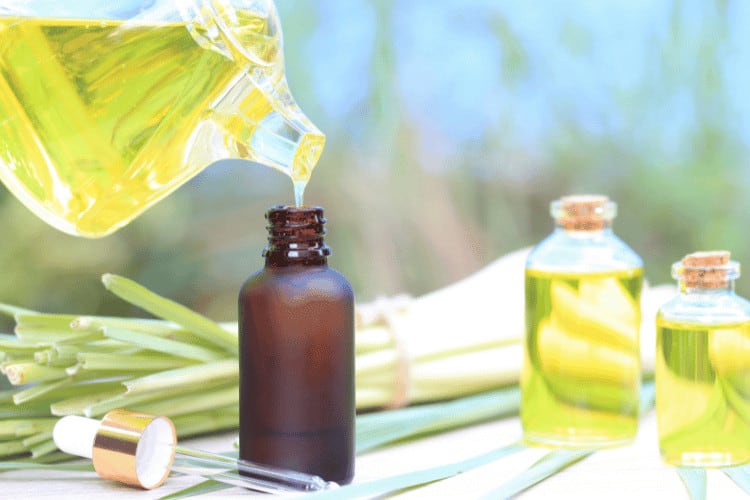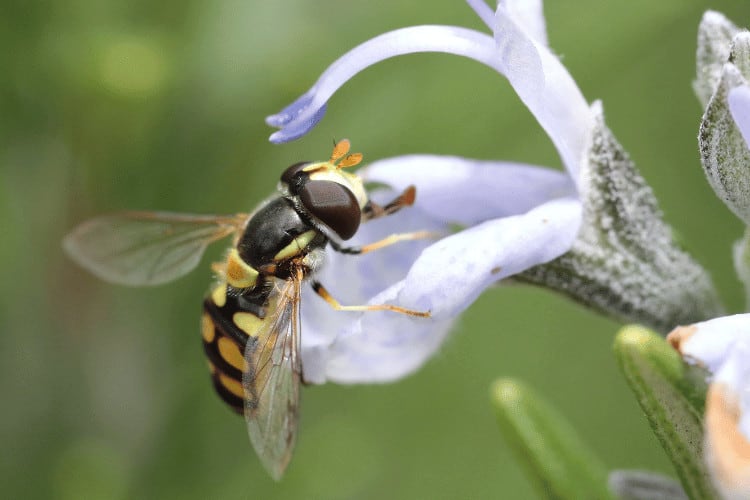Mason Bee Attractant: Best Products and Home Recipe
Mason bees are solitary bees native to North America. They’re important pollinators, and they’re also relatively easy to attract to your garden.
One way to attract mason bees is to use mason bee attractant, which is a substance that mimics the scent of the bees’ natural nesting materials. You can effectively draw the bees to your bee house or nesting blocks by spraying them with this formula.
Today, I‘m here to share my knowledge with you after trying several commercial bee attractants. I’ll also tell you my secret homemade bee attractant recipe if you prefer to DIY.
So, are you ready to invite those beneficial insects to your place?
The Top Mason Bee Attractant Products in 2023: Rated by an Expert Beekeeper

Let me start by reviewing my favorite commercial mason bee attractants in 2023. After testing the following products, I was blown away by the results!
Camas Mason Bee House Attractant
I’ve been using the Camas attractant for the past few years and had no trouble attracting mason bees to my bee houses. Better still, I saw a significant increase in the pollination of my plants!
The Camas Mason Bee House attractant can be a great option to help you tackle the task of luring mason bees to your bee hotels. The pheromones in this product have the scent of mud and pollen found near irresistible natural nest sites.
While there are other commercial attractants available, many of them contain citrus oils. These oils can sometimes be harsh on the bees.
That’s not the case here, though, since this lure spray features a blend of essential oils safe for the bees and still effective at attracting them.
Yet, my favorite aspect of the Camas attractant is that it’s a breeze to use. You’ll only need to spray it on the bee house you’ve set up to draw the bees to it.
Ultimately, the attractant is weather-resistant, so you don’t have to worry about it washing away on a rainy day!
Donaldson Farms Natural Mason Bee Attractant
Another product I highly recommend to a beginner beekeeper is the Donaldson Farms Natural Mason Bee attractant. Let me specify why I like it so much.
First of all, this 100% natural attractant is made with fresh lemongrass oil and sugar. Its lovely, pollen-like smell is every pollinator’s dream!
Second, being made of natural ingredients, you can be sure it’s safe for both the bees and your garden plants.
Lastly, you’ll admire the care with which the manufacturers of this lure designed the little spray bottle. The attractant is made in the U.S.A. and packaged in a UV-protected bottle with a wide-spray nozzle.
This promises easy application to large mason bee houses and even the most intricate tunnel-style beehives!
A Tried-and-True Homemade Mason Bee Attractant
As a beekeeper, I’ve witnessed firsthand how mason bees go crazy around the scent of lemongrass essential oil. So, I thought: why not create my own version of a homemade mason bee attractant instead of a commercial product?
After some trial and error, I achieved success by following this recipe:
Ingredients
- 1 tablespoon of lemongrass essential oil
- 1 tablespoon of sugar
- 1 cup of water

Instructions
- Start by mixing the lemongrass essential oil and sugar in a small bowl.
- Add the water and stir until the sugar dissolves completely.
- Pour the attractant into a spray bottle, preferably one with a large nozzle to make application easier.
- Spray the attractant on the nesting tubes and materials in your mason bee house.
Additional Tips When Making Mason Bee Attractant at Home
To make the most of your homemade lure spray, you should keep these guidelines in mind, too:
- Use fresh lemongrass essential oil. The older the oil, the less effective it will be.
- You can add other essential oils to the attractant, such as lavender or peppermint.
- Store the attractant in a cool, dark place.
- Reapply the attractant as needed, especially after a heavy rainfall.
- Use a clear glass bottle to see how much attractant is left.
- Label the bottle with the date you made the attractant to know how long it has been sitting.
- Keep the bottle out of direct sunlight to prevent the essential oils from losing their potency.
How to Use a Mason Bee Attractant
Start by gathering your materials all in one place. You’ll need the attractant spray bottle and a pair of gloves so that you don’t have a mess on your hands. It’s also a good idea to wear a long-sleeved shirt and pants.
Then, apply the attractant to the nesting materials in your mason bee house. Be sure to get the attractant into all the nooks and crannies of all the nesting chambers.
Be careful not to get the attractant on your skin or in your eyes.
Finally, don’t forget to reapply the attractant as you see fit. The attractant will eventually lose its potency with time, so you’ll need to reapply it every few weeks.
What Are Some Other Effective Ways to Attract Mason Bees?
Drawing mason bees to the nesting homes you’ve created for them isn’t just about applying these formulas.
This practice should go hand-in-hand with other steps to make your yard more inviting as a suitable habitat for these efficient pollinators.
- Plant mason bee-friendly wild flowers: These bees like blooms with a single opening, such as lavender, mint, and columbine. They also prefer flowers that produce a lot of pollen, like sunflowers and dandelions.
- Provide a water source: You can provide a water source for mason bees by placing a shallow dish of water in your garden or leaving a birdbath out.
- Place your mason bee house in a sunny spot: Mason bees prefer to nest in sunny locations with good protection from the wind. They’re huge fans of the morning sun!
- Fill your bee house with nesting holes and materials: Mason bees nest in tubes or holes about 1/4 inch in diameter. Provide bamboo tubes, paper tubes, or wooden dowels as nesting materials.
- Be patient: It may take some time for mason bees to find your nesting structure. Be patient, keep trying, and you’ll eventually be rewarded with the sight of these beautiful bees pollinating your garden.

FAQs
Why do beekeepers attract mason bees?
As a beekeeper, you’ll want to attract mason bees for many reasons.
First, these bees are very efficient pollinators. They can pollinate a wide variety of native plants, including fruits, vegetables, and flowers. Mason bees are more productive than the majority of other bee species, producing up to ten times more pollen than honeybees.
Second, mason bees aren’t as susceptible to diseases and pests as honeybees. This makes them a more reliable source of pollination for beekeepers.
By attracting mason bees, you can help improve the pollination of your crops and support the native bee population.
Even better, this bee species is less expensive to care for than honeybees. It doesn’t need to be fed or housed during the winter nor does it require as much attention as honeybees.
Finally, mason bees are less likely to sting you. This makes them safer for novice beekeepers or people allergic to bee stings.
What are some behaviors that might repel mason bees?
Here are a few things you should avoid doing, as they might repel these native pollinators:
For starters, don’t wear strong perfumes or lotions near the nesting houses. The scent of these products can overwhelm mason bees and may deter them from visiting your garden.
Also, you must steer clear of pesticides that can kill mason bees and other effective pollinators. There are plenty of organic pest control methods that are safer for bees and the environment.
In addition, mason bees are sensitive to noise, so avoid making loud noises near your garden, such as mowing the lawn or using power tools. If you need to do these things, try to do them early in the morning or late in the evening when the bees are less active.
Finally, try not to move their nest once they start using it. Moving it can stress the bees and make them more likely to abandon it. If you must, carefully relocate it to a similar location nearby.
To Wrap It Up
Well, that’s it for this article on mason bee attractants.
These useful products do a wonderful job mimicking the smell of natural materials that draw this bee to nesting sites. So, by harnessing their power, you’ll have a much higher chance of luring mason bees to the homes you’ve built for them in your yard.
In the meantime, I encourage you to get out there and start attracting bees to begin your mason beekeeping adventure! These pollinators are essential for our ecosystem, and we can all do our part to help them thrive.
